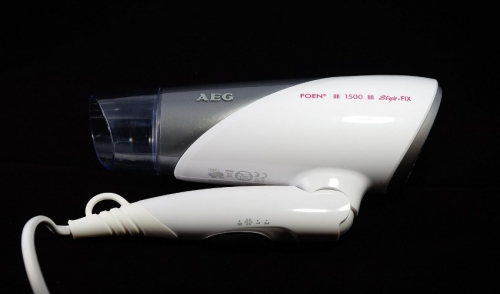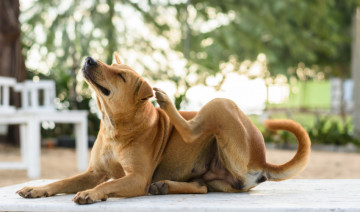Does Your Dog Have a Flea Allergy?
Fleas are a common annoyance to many dog owners, but these small pests can be a much bigger problem when a dog may be allergic to fleas. Recognizing if your...

Regular baths are essential for your pet's health. Not only do baths help keep the coat and skin in good condition, but they also remove lose fur to minimize shedding, discourage fleas and reduce odors. But after the bath, how do you get your pet dry again?
Why Dry Your Pet
It may not always be necessary to dry your pet, especially if they have short fur and it is a warm day and they can dry naturally in just a short time. If you don't dry your pet, however, they may be apt to roll around to attempt to dry and settle their fur themselves, and that can create tangles and matting in their coat. Rolling and rubbing will also drive new dirt and debris deeper into their coat, undoing all the good of the bath. If you dry your pet, you avoid these potential problems and keep your pet looking great.
Ways to Dry Your Pet
There are several different ways to dry your pet, and groomers often use different drying methods depending on a specific pet's needs.
Choosing a Drying Method
Any of the basic drying methods can be used for most pets, though some are better suited to different coat types or fur lengths. Groomers may have preferred drying methods, or a method may be chosen based on a pet's sensitivity to noise, heat or the motions of drying off. If a pet is being prepped for a formal show, more careful drying may be necessary, and some pets do not have the temperament to tolerate more vigorous methods. At all times, the pet's safety should be kept in mind so they are not injured or stressed during drying.
About Heat Stress
It is important to watch pets for signs of heat stress and dehydration whenever they are being dried. Prolonged use of warm or hot air could overheat the animal, but there are ways to keep drying safe. First, only use a method the pet is comfortable with, and if they are anxious or fearful, stop the process. Use heat as little as possible, taking frequent breaks to cool down and reassure the animal, even rewarding them with a treat for good behavior. If a lengthy drying period is necessary, several breaks should be used and the pet should be offered water each time. Stay alert for any signs of heat stress, including excessive panting, dull eyes, pale gums, sticky saliva or listless behavior. If the pet shows signs of heatstroke, discontinue drying immediately and seek proper veterinary care.
With proper precautions and choosing an appropriate drying method to suit your pet, they can quickly recover from the indignity of a bath and be their clean, happy, dry selves again.

We currently do not have any events scheduled.

Fleas are a common annoyance to many dog owners, but these small pests can be a much bigger problem when a dog may be allergic to fleas. Recognizing if your...
Comments